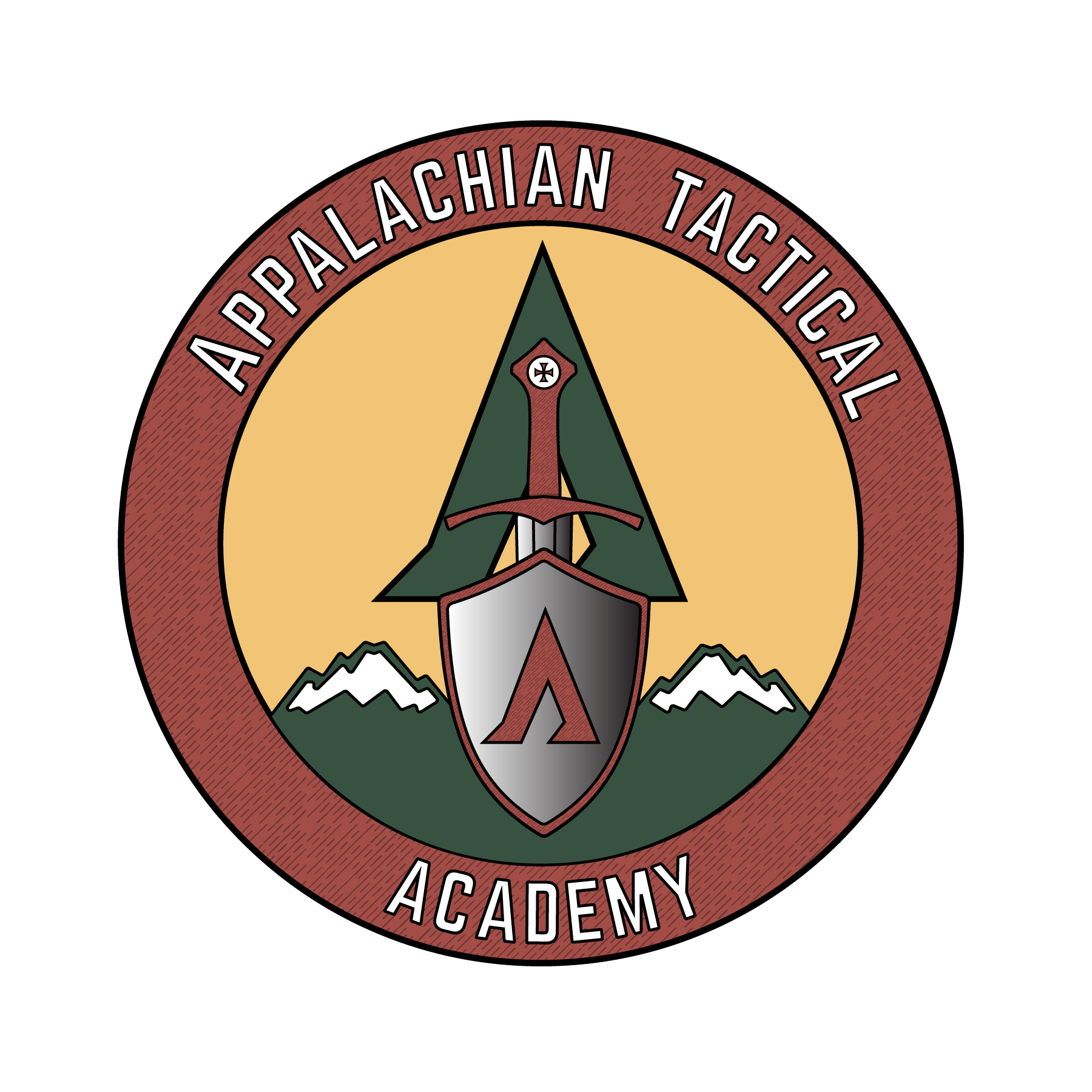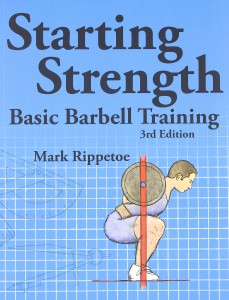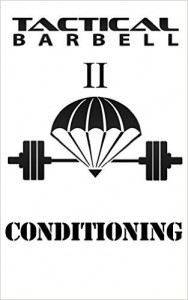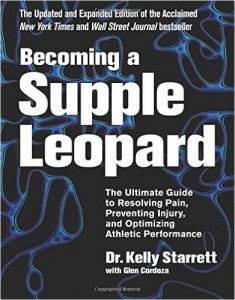This post is part of the Basic Training series. In this series, I lay out a roadmap to success for the armed citizen seeking tactical training.
Basic Training: Where Do I Start?
Basic Training: Get Your Priorities Straight
Basic Training: Get Your Mind Right
Basic Training: Harden Your Body (Part 1)
Basic Training: Harden Your Body (Part 2)
Basic Training: Tactical not Tacticool
Basic Training: Become Technically Proficient
In the first Basic Training: Harden Your Body article, I talked very generally about physical fitness. I primarily focused on nutrition, but I also touched on the three primary components of General Physical Preparedness (GPP), as I see them: strength, conditioning, and durability. In this article, I’m going to zoom in on the details of how we go about developing those three components of GPP.
Strength: The Foundation of GPP
I believe that a high degree of absolute strength is the most critical component in your GPP. With all other things being equal, strength just makes life easier. I’m not just talking about how lifting heavy things and opening stuck jars become easier, either; everything – even cardio-based tasks – become easier when you are strong. Think about a lot of those high-intensity Crossfit WOD’s that involve lots of barbell movements. Those workouts are designed to be about conditioning, but the stronger you are, the easier it is to move that barbell. Watch an example of that here as Brian Shaw (the strongest man in the world) smokes a high-level Crossfitter in the Crossfit WOD “Grace”:
So what is the best way to go about developing high level of strength? Well in my opinion, it is by focusing primarily on heavy barbell lifting, a la the discipline of powerlifting.
Powerlifting-style workouts are a lot different than what most people imagine when they think about weightlifting. When most people hear “weightlifting”, they picture dudes curling and shrugging dumbbells while checking themselves out in the mirror. The type of “normal” weightlifting you see going down in the gym is bodybuilding, which is more focused on how you look rather than how strong you are.
Now don’t get me wrong; I’m not talking bad about bodybuilding. Looking good is the stated goal of bodybuilding, and there are a lot of bodybuilders who are way stronger than I am. If you’re a bodybuilder, then rock on.
But what I’m saying is that the most efficient way to develop high levels of strength is through powerlifting-style heavy barbell lifting. What that involves is doing low-rep, high-weight sets of compound, multi-joint lifts. So what exactly does that mean?
Think of a biceps curl: that is an isolation, single-joint lift. You are isolating your biceps, and the only joint moving is your elbow. To build real-world, total-body strength those sort of lifts are just really inefficient. Think about how you move in real life; when do you ever pick things up by curling them and using no other muscles in the movement? If you’re anything like the other 99.999% of the human species, then the answer to that is pretty rarely.
On the other end of the spectrum as far as arm work is concerned, we have the overhead press (OHP). In an OHP, the lifter presses a barbell directly overhead with both hands. You have movement in your hips, shoulders, elbows, and wrists. The muscles being exercised are pretty much everything from your upper back through your hands. It’s a compound movement that involves multiple joints, and it’s much closer to what we do in real life.
In powerlifting-style workouts, there are only a few lifts that you perform. You don’t break things down into back/bi, chest/tri, legs, etc. Instead of training body parts, you train movement patterns, which are the type of compound, multi-joint movements that you have to do in everyday real life. The five primary movement patterns are:
- Standing Press
- Horizontal Press
- Squat
- Floor Pull
- Pull-up/Row
Basically, you just pick one lift for each and work those movements. In the case of the floor pull, you might actually use two different lifts because you will move massive amounts of weight with your deadlift, and you need another to substitute for it while you recover. The “standard” lifts you use to workout this way (and the ones I personally use and recommend) are listed below:
- Overhead Press
- Bench Press
- Barbell Back Squat (Low-bar variant)
- Deadlift (and Power Clean for lighter days)
- Weighted Chin-ups
Five lifts (with an alternate sixth). Believe it or not, that’s all you need to get ridiculously strong. You do not need to work your pecs from 14 different angles. Just do the five basic movement patterns that humans use and you will see huge gains in your total body strength.
Learning the Lifts and Developing a Lifting Program
While I don’t think it’s fair to say that any of the above-named lifts are dangerous, the fact of the matter is that you need to learn to do them correctly. Doing those lifts incorrectly can lead to injuries and chronic pain. Fortunately, they are not very complex to learn, and there are lots of great resources that will teach you how to do them. The two best ones I’ve found are Starting Strength by Mark Rippetoe and Tactical Barbell by K. Black:
These are both excellent resources for learning about how to build real strength. You need them both, but I recommend starting with Rippetoe if you are a complete beginner. As the name implies, Starting Strength is focused on taking a novice lifter and quickly developing a base of strength. Note that even if you’ve been lifting for years, you are probably still a novice if you’ve never learned about this stuff the way Rippetoe teaches it.
Once you have graduated to what Rippetoe calls “Intermediate”, then Starting Strength will no longer help you, and you will need to move on to Tactical Barbell. The programming in Tactical Barbell is more geared toward developing strength over the long haul. It’s about how to design a lifting program that you can do safely and make gains with for years to come. Tactical Barbell is certainly scalable for beginners, but Rippetoe’s program hasn’t gotten famous as a beginner’s plan for nothing.
The best way to learn the lifts themselves is to have a professional coach teach them to you. With that said, Starting Strength describes – in great detail – how to perform the Overhead Press, Bench Press, Low-Bar Back Squat, Deadlift, and Power Clean. Most people learn physical skills visually better than through writing, however, and Rippetoe produced a series of Youtube videos in conjunction with Art of Manliness that provides some fantastic instruction on these lifts. Here they are:
Conditioning: Revving Your Engine
The next component in GPP is conditioning or, as most people call it, cardio. Call it whatever you want, but the bottom line is that we’re talking about working your heart and lungs so that you have the energy to do what needs doing.
The need for this should be obvious: if you have to fight, escape a burning building or active shooter, or cover a lot of ground quickly, then you need to be able to produce the energy to accomplish that task without breaking down and having a coronary. I said above that strength is the foundation of GPP – and that’s true – but the reality is that conditioning is at the heart of GPP. Remember: all other things being equal, strength just makes life easier. But what about when all other things aren’t equal? What if you can deadlift 600 lbs, but you’re so big, overweight, and under-conditioned that you can’t climb a flight of stairs without stopping for a break? Well if that’s the case, then as an Armed Citizen you’re borderline useless. Conditioning isn’t as fun as lifting weights, but you cannot afford to skimp on it.
We break down conditioning into two main categories: endurance and work capacity.
Endurance refers to your ability to put out a low amount of energy for a really long period of time. Jogging, hiking, and walking for long periods of time are all examples of Low Intensity Steady State (LSS) conditioning used to build up your endurance.
Work capacity is your ability to go all-out for as long as you can, but usually relatively short periods of time. We train work capacity through High Intensity Conditioning (HIC), which is also known as High Intensity Interval Training (HIIT). HIC involves doing things like hill sprints, kettlebell swings, and burpees all-out and with very little rest time between sets.
There is a lot of misunderstanding about conditioning. Many weightlifting bros believe that doing any cardio at all will rob you of all strength gains. Well I hate to burst your bubble, but unless you are so strong that you’re competing at a world-class level or you’re so specialized in endurance that you run marathons in the Olympics, then it’s just a non-issue. You can both get strong and have good conditioning.
How to Condition
Since the possibilities are virtually endless with regards to conditioning work, I’m just going to recommend my favorite resource and then give you a broad overview and list a few of my favorite workouts.
First, my favorite resource for information and programming on conditioning is Tactical Barbell II by K. Black:
In TBII, K. Black breaks down conditioning for you, and even gives you various options for programming strength and conditioning sessions together into an all-encompassing GPP training plan. I can’t recommend this book enough. If you were only going to get one book on exercise, this would probably be the one.
Based on my research and personal experience, I think that the best thing to do to develop the conditioning aspect of your GPP is to work LSS conditioning about once per week and do HIC training two to three times per week. I think that probably gives the best of both worlds. K. Black calls this his “Black Protocol” in TBII.
Low Intensity Steady State (LSS) Work
When doing LSS cardio, your goal is is to elevate your heart rate to somewhere around 55%-75% of your Max Heart Rate (for most people 40 and under, that’s about 120-150 beats per minute) and hold it there for an extended period of time, maybe an hour or more. There’s not a lot more to explain on this one. Just pick low-intensity activity that will get your heart rate in zone and then do it for 30-120 minutes. My personal favorites are slow hikes with a pack and treadmill walking. I set the treadmill to about a 10% incline and then set the pace for a brisk walk (about 3.7 mph for me). That keeps my heart rate in zone with no problems.
High Intensity Conditioning (HIC)
For HIC work, you’re going to do things that jack your heart rate way up to about 90% or so of your max. You may do intervals where you alternate between high intensity periods and rest periods, or you may just do something that keeps your heart rate really high for the entire workout. Usually, HIC workouts take about 20 minutes. Here are some of my favorites from TBII and other places:
- Fast Five (TBII): Do a 5k (3 mile) run as fast as you can.
- Two-Miler: Similar to Fast Five in that you run 2 miles as fast as you can, but the trick is that you’re wearing boots, pants, shirt and a 30# pack while carrying a rifle in your hands.
- Apex Hills (TBII): Sprint to the top of a hill that takes you about 30 seconds to run, then do 10 kettlebell swings. Walk to the bottom and then repeat 5 to 10 more times.
- 600m Resets (TBII): Sprint 600 meters and then rest 3 to 5 minutes. Get fully rested before running it again. Repeat for 5 rounds.
Again, your best resource for this is gong to be Tactical Barbell II: Conditioning. Get a copy; you won’t regret it.
Durability: In It For the Long Haul
When I say durability, I mean your body’s ability to resist injury. You need to be accomplish whatever physical task needs doing and continue to function for the long term. By “physical task”, I mean any physical task, including your daily PT. Doing strength and conditioning work can take a toll on the body, and if you want to be healthy while continuing to make gains for the long term, then you need to ensure you have the highest levels of durability.
Durability has many facets, but at its core is strength and mobility. Strength helps your durability, because the bigger, stronger, and more robust your muscles become, the harder they are to injure. The more strong muscles that are packed around a joint, the harder that joint is to hurt.
But strength isn’t all there is to durability. You also have to take time to work on your mobility or else training imbalances will floor you. Ever heard of Anterior Pelvic Tilt? Powerlifters have.
Think of mobility as a broader category that involves both flexibility and agility. With good mobility, your joints work like they should, and your muscles, tendons, and ligaments are all supple, which means they bend instead of breaking. Developing your mobility – along with increasing your strength – is key to having a high level of durability.
I won’t really say much more about the “how-to” of durability. It’s such a broad world that so few are really well-versed in that I just can’t do it justice. But what I will do is point you in the direction of the best resource on mobility available on the internet: MobilityWOD.
Originally started by physical therapist Dr. Kelly Starrett as a series of free YouTube videos, MobilityWOD has morphed into something much more. All the original free YT videos are still out there and available at no cost to you, which means that you have access to 90% of what you need to develop your durability at your fingertips. With that said, there is now a membership option available at MobilityWOD and Kelly Starrett has also written an absolutely fantastic book packed with full-color photographs called Becoming a Supple Leopard:
The free resources available from MobilityWOD are awesome, but this book is phenomenal. If you want to really take your mobility/durability work to the next level, then you won’t be disappointed by it.
Programming: Putting It All Together
So how do we put all this information together into a cohesive plan that we use to make gains in our GPP? We do that through the correct programming – that is, developing a progressive PT program that steadily increases our fitness over time.
If starting from the beginning, here is what I recommend:
Start with the Starting Strength plan. I really think you should pick up the book, but you can find the details of the program for free on the Starting Strength wiki. Between the videos I linked above and the wiki, you can learn everything you need to know to get up to an intermediate level of strength for free.
Stay on Starting Strength until you reach the intermediate level. If you have made a lot of gains, but you find yourself getting too fat or slowing way down, then you can go ahead and come off of the program a little early.
After you finish doing Starting Strength, complete an Aerobic Base Building cycle as outlined in Tactical Barbell II. This is an 8-week program that will build up your base of conditioning. Once you have made it through the Aerobic Base Building cycle, switch over the to Black continuation protocol that he describes in the book, and combine it with the Zulu, Operator, or Fighter lifting templates K. Black describes in the original Tactical Barbell book.
Once you get to this point, you basically just keep on trucking with your Black Protocol. I actually prefer the “Professional” variant to the standard one. This is what that looks like:
- Lifting: 2, 3, or 4 days per week, depending on your exact lifting plan.
- HIC: 2 days per week
- LSS: 1 day per week
- Durability: 15-20 minutes at the end of each workout
- Total: 4 to 6 days of PT per week (that means that you may do both strength and conditioning on the same day, in some cases)
That’s it! That’s all there is to building a PT plan that will boost your GPP to extremely high levels. The keys to this lie in consistency and progression.
The most important thing is that you do the work consistently over the long haul. If you miss a workout, then no big deal; just pick up where you left off tomorrow and don’t miss any more. Don’t freak out over having to double up the next day or anything like that. Just try to commit to never missing more than 1 workout in a row. Show up and put the work in.
You also have to constantly progress in your GPP. In other words, you have to plan to lift more weight today than you lifted yesterday, to run faster today than you did yesterday, to go for a longer time today than you did yesterday. You don’t necessarily have to kill yourself every day, but you do need to get better over time. The specifics of how to do that are outlined in the resources I’ve shown you, so you don’t even have to figure out how to do that!
Speaking of the various books, videos, and other resources I linked: You can get in shape without having to buy a huge amount of stuff. While I highly recommend Rippetoe’s and Starrett’s books, you can find what you really need to know about their programs for free on the interwebs. With that said, I really think that you should pick up Tactical Barbell and TBII. They are inexpensive (combined, both ebooks cost you less than $17), and they contain ALL the information you need to build a solid Strength & Conditioning plan.
That’s a Wrap
Well, that’s my philosophy on physical training in a nutshell. I wish I could get into all the specifics of PT and fitness that I really want to talk about, but I would pretty much have to write my own book in order to do that. Hopefully, this is enough information to get you pointed in the right direction and start your own journey toward the sort of General Physical Preparedness that an Armed Citizen needs. Don’t gaff off the recommended reading: these resources I gave you are where it’s at for getting real-world fit.
Now consider this for a second: You have the tools. All you need is the effort. All of us Armed Citizens – no matter where we are with our skills – will reap huge benefits from Physical Training and the resulting high levels of GPP. The difference between fitness and fatness is one decision away. Today – right now – you can make a decision to get up and do something that betters your GPP – or you can make an excuse not to. If every day you make just one decision to better yourself – just one little decision – then imagine where you will be in a year.
Each day you can pick one of two options: gains or excuses. Which will it be?
The choice is yours.
-Ben







Trackbacks/Pingbacks